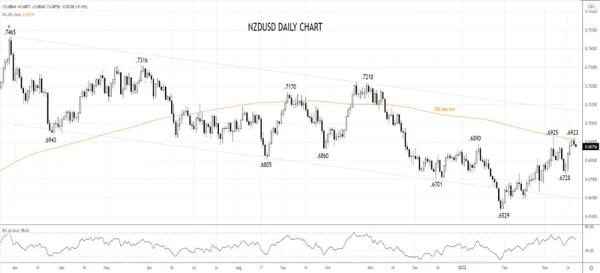U.S. yields surged overnight by a jaw-dropping 10-18bp across the curve after Fed Chair Powell opened the door to a 50bp rate hike at the next FOMC meeting.
“if we conclude that it is appropriate to move more aggressively by raising the federal funds rate by more than 25 basis points at a meeting or meetings, we will do so. And if we determine that we need to tighten beyond common measures of neutral and into a more restrictive stance, we will do that as well.”
The Fed Chairs’ tone has become increasingly hawkish with each outing, and after a long slumber, the hawk within the Fed Chairman is rapidly increasing altitude.
Against this, earlier today, Westpac Consumer Confidence in New Zealand fell to 92.1 in the first quarter of 2022, down from 99.1 in the final quarter of 2021. Anything below 100 indicates “there are more New Zealanders who are pessimistic about the economic environment than there are those who are optimistic”.
Today’s fall takes the indicator to the lowest level since the Global Financial Crisis in 2008 and comes on the back of higher mortgage rates and rapidly spiralling prices for household goods, food, and fuel, all of which are eating into household budgets.
Todays slump in consumer confidence comes after evidence the housing market has started to slow and may raise questions about whether the RBNZ will need to raise interest rates as aggressively as the market has priced.
Following the softer consumer confidence data, the NZDUSD is trading marginally lower at .6876, after rejecting resistance yesterday at .6925 coming from the 200-day ma and March 7th high, which leaves a double top in place.
As such, while below .6925/35, a short-term bearish bias is in place, looking for the NZDSD to rotate lower towards support at .6800c. The stop loss on the bearish view would be a sustained break/close above .6925/35.


 Signal2forex.com - Best Forex robots and signals
Signal2forex.com - Best Forex robots and signals




